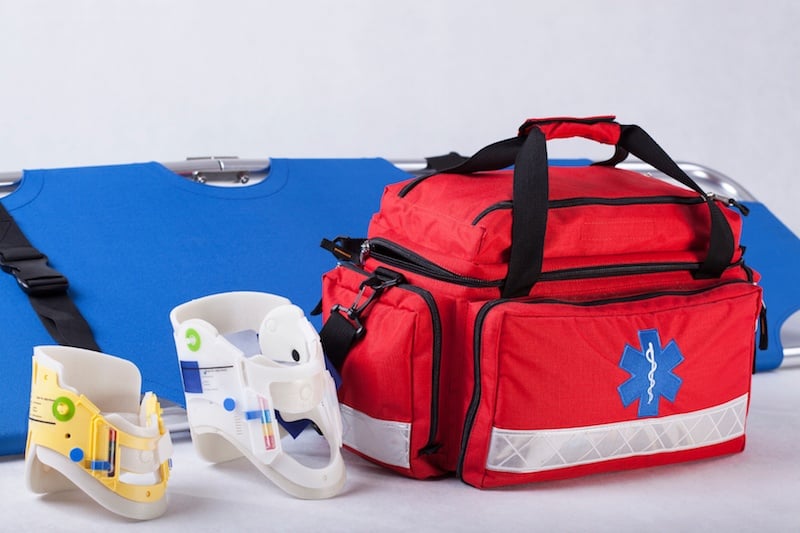
You are about to head out on a call for a 65-year-old man who is reported to be suffering from sudden respiratory distress. Few details are known about this man’s medical history, so you aren’t entirely sure what you are about to encounter. You grab your First In bag, knowing that your airway management tools mean you’re well–prepared for any airway emergency.
You arrive at the residence and find the gentleman unconscious. A family member states he was able to assist him to the ground. The victim is breathing shallowly. He is observed to be obese with a short neck.
Which Tools Do You Pull Out of Your Bag and Why?
Portable suction
The priority in any respiratory emergency is to clear the airway. A head tilt and chin lift maneuver is used to open the airway. You use your portable suction device to remove some mucus that has pooled in the oropharynx. No vomit or blood is seen.
Pulse oximeter
You quickly slip a pulse oximeter onto his index finger to get a baseline oxygen saturation. You note that his lips look pale and his hands are cool and clammy. The oximeter reads 90%.
Nasopharyngeal (NPA) and Oropharyngeal airway (OPA)
A patent airway needs to be maintained, so you reach for your airway adjuncts. You determine that your victim does not have a gag reflex and select an OPA. You open the victim’s mouth and insert the OPA upside down, rotating it 180 degrees when it reaches the back of the mouth. The OPA is advanced until the flange reaches the victim’s front teeth. Oxygen is delivered to the victim via a non-rebreather mask.
Bag-Valve Mask
Then you note that the victim has stopped breathing.
You use your bag-valve mask to begin ventilating the victim. Keeping the airway open utilizing a jaw thrust and creating a good seal around the mask, the victim’s chest is seen to rise and fall. Each ventilation is delivered with a long inspiratory time. His color begins to improve, and his oxygen saturation increases to 95%. Meanwhile, your partner starts getting the intubation supplies ready.
- Laryngoscope
- Endotracheal tube (ETT)
- Endotracheal tube introducer (ETI)
Since the victim is obese, he is placed in a “stacking” position, using some folded towels under his shoulders and head to raise the tip of the chin just higher than the chest. With the laryngoscope, you try and visualize the vocal cords. Suction is used again to clear the airway.
The airway is hard to visualize, so you insert an ETI in the middle of the larynx past the base of the epiglottis. An 8.0 ETT is inserted over the ETI, and the ETI is removed. Ventilations are resumed using the bag and oxygen, but the victim’s chest wall is not moving. Oxygen saturation is dropping.
End-tidal Carbon Dioxide monitor (ETCO2)
The ETCO2 monitor is connected to the ET tube. No color change is seen with ventilation.
Stethoscope
You auscultate the victim’s chest wall with your stethoscope and verify the absence of bilateral breath sounds. Moving air is heard over the epigastric region. The ETT is improperly placed in the esophagus. You remove the ETT and resume bag-mask ventilations.
Supraglottic airway device (SAD)
Since the victim is determined to be a difficult intubation, you decide to use an SAD. Now, you witness good chest rise and fall. Bilateral breath sounds are auscultated, and the victim’s oxygen saturation rises to 97%. The patient is then prepared for transport to the nearest hospital.
The Importance of Critical Thinking Skills
When on an emergency call an EMS provider needs to use critical thinking skills to make fast decisions about the best treatment options for the patient. Every second is important, and you need to have the necessary tools within your reach. Careful consideration of which airway management tools you include in your first-in bag can determine whether or not resuscitation is successful.
Editor's note: This blog was originally from August 2021. It has been re-published with additional up to date content.















